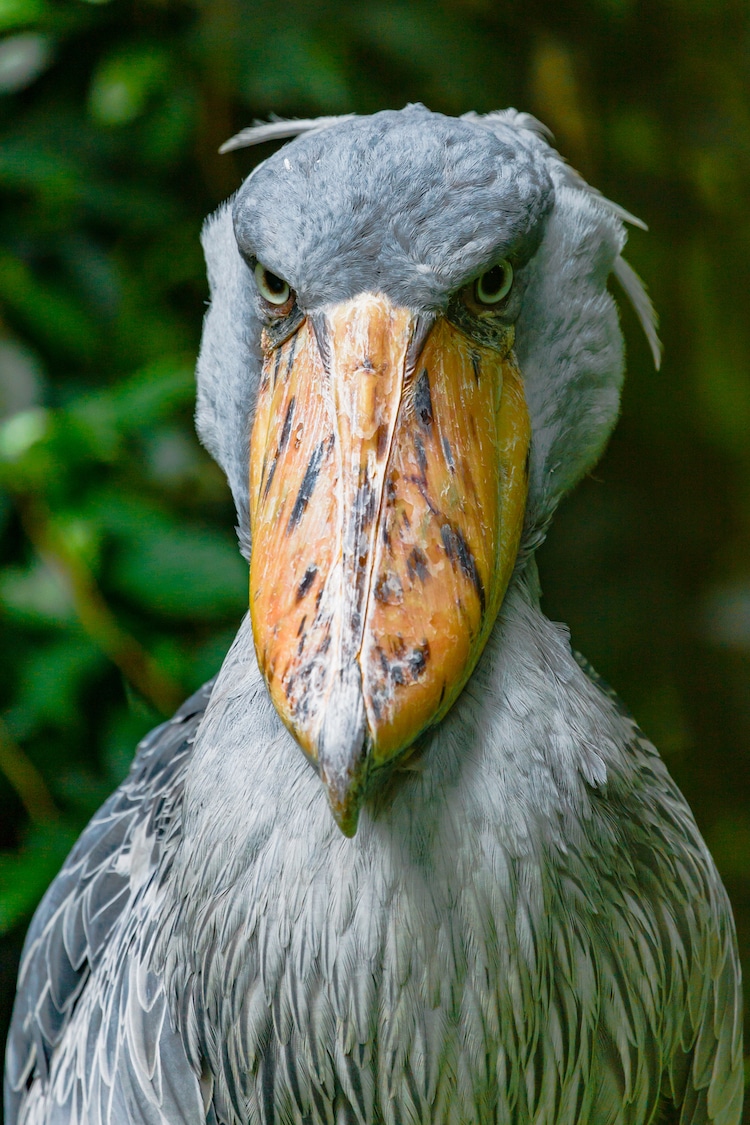
Meet the Shoebill Stork, an Enormous Bird That Looks Like a Muppet
Looking like a mix between a dinosaur and a Jim Henson puppet, the shoebill stork (Balaeniceps rex) is a sight to behold. The large African bird gets its name from its distinct beak, which looks like a shoe. Sometimes called a whale-headed stork, these birds actually aren't storks at all, but are more closely related to pelicans and herons. These solitary birds are not only fascinating for their prehistoric look but also for their behavior.
The shoebill's natural habitat is the swamps of eastern Africa. Their thin legs with large feet give them the ability to wade through the vegetation of swamps and marshes from Ethiopia to Zambia. Thanks to their stature, they truly are kings of their environment. They can reach up to five-feet high with an eight-foot wingspan, making them fairly intimidating. Just their clog-like beak, alone, measures a foot long and nearly half a foot wide.
But if you came upon a shoebill, there's a good chance you'd be intimidated not only by the size but the fact that they don't move. Shoebills can stand motionless for hours, waiting for the perfect moment to catch their prey. And when the time is right, they make their move by exhibiting a behavior called collapsing. This means that they simply fall forward on their prey with their beaks wide open, scooping up their meal.
They're not only deliberate in their movements but also in their sounds. Shoebills are typically silent except when they arrive at the nest. Then, they'll clatter their bills, much like storks do, to communicate with one another.
Advertisements
06 July 2023
Advertisements



